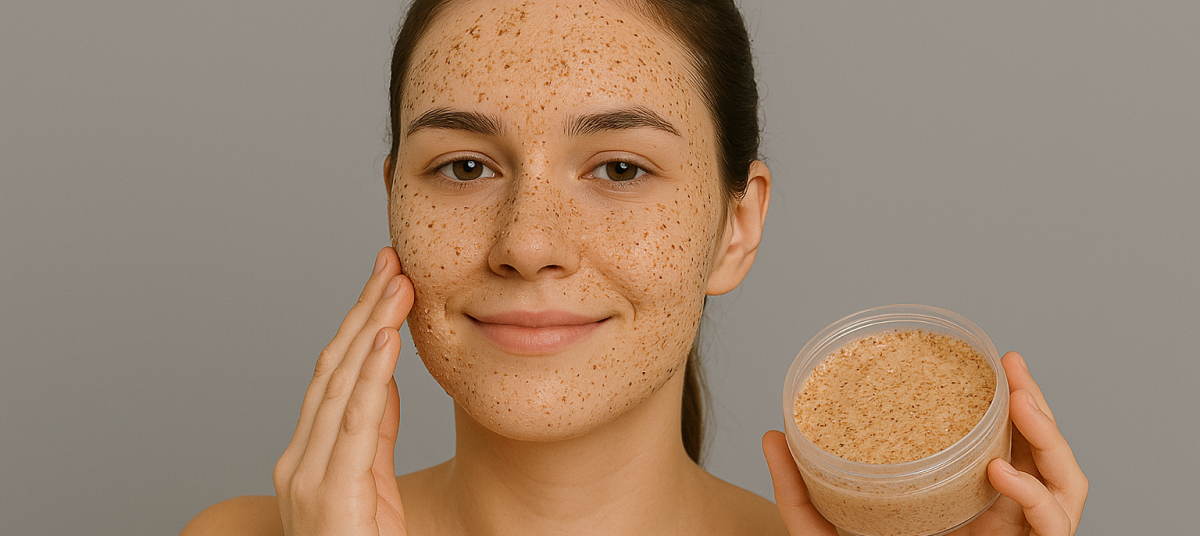You cleanse, moisturize, apply serums — but your skin still looks dull? Maybe it’s just waiting for a little exfoliation.

Exfoliation: Why This Skincare Step Is So Important
In any skincare routine, we know the basics: cleanse, moisturize, protect. But there’s one crucial step that often gets overlooked — exfoliation. This is the process of regularly and gently removing dead skin cells. Without it, skin doesn’t renew properly, looks gray or patchy, and your creams and serums simply won’t perform at their best.
What is exfoliation, exactly?
It’s the removal of dead skin cells from the surface of your skin. Normally, your skin renews itself every 28–40 days, but factors like age, stress, dryness, or improper care can slow this down. The result? A dull complexion, flakiness, clogged pores, and uneven texture.
Exfoliation helps reboot the skin renewal process — gently but effectively.
Why exfoliate regularly?
- More even skin tone
- Fewer breakouts and blackheads
- Serums and creams absorb better
- Softer, smoother texture
- Clearer pores
- That coveted glow-from-within look
What types of exfoliation are there?
1. Physical (mechanical) exfoliation
Think scrubs, brushes, or pastes — products with gritty particles that physically buff away dead skin.
Important notes:
- Not suitable for sensitive, irritated, or inflamed skin
- Can damage your skin barrier if used too often or with too much pressure
- Facial skin is especially delicate — reserve physical exfoliation for the body
2. Chemical exfoliation
This includes acids like AHA, BHA, and PHA, which gently break down the bonds between dead skin cells.
Why people love it:
- Highly effective
- Non-abrasive
- Works even without visible peeling
- Safe for facial skin
✓ A top choice for most skin types
3. Enzyme (enzymatic) exfoliation
Products with natural enzymes (like papain or bromelain) that gently break down dead cells.
These are super gentle — great for daily use and ideal for sensitive, dry, or redness-prone (couperose) skin. Think: soft enzyme powders that feel like skincare comfort food.
How often should you exfoliate?
- Normal / Combination skin: 1–2 times per week
- Oily / Acne-prone skin: 2–3 times per week (or more often, but only with gentle formulas)
- Dry / Sensitive skin: Once a week or even less, using the mildest options available
When to skip exfoliation:
- During active breakouts
- If your skin is irritated, windburned, or post-peel
- Right after shaving or waxing (wait at least 24–48 hours)
- Before sun exposure (especially if using acids)
The golden rule? Don’t overdo it.
More isn’t better. Over-exfoliating can damage your skin barrier, cause irritation, dehydration, and even trigger breakouts.
If your skin feels tight, stings, or becomes too thin — take a break.
Exfoliation isn’t optional — it’s essential.
It’s not something you do if you have time. It’s a key investment in your skin’s health and glow. It helps your products work better and keeps your skin looking its best.
Your skin can look beautiful — sometimes, it just needs a little help.



Leave a Comment